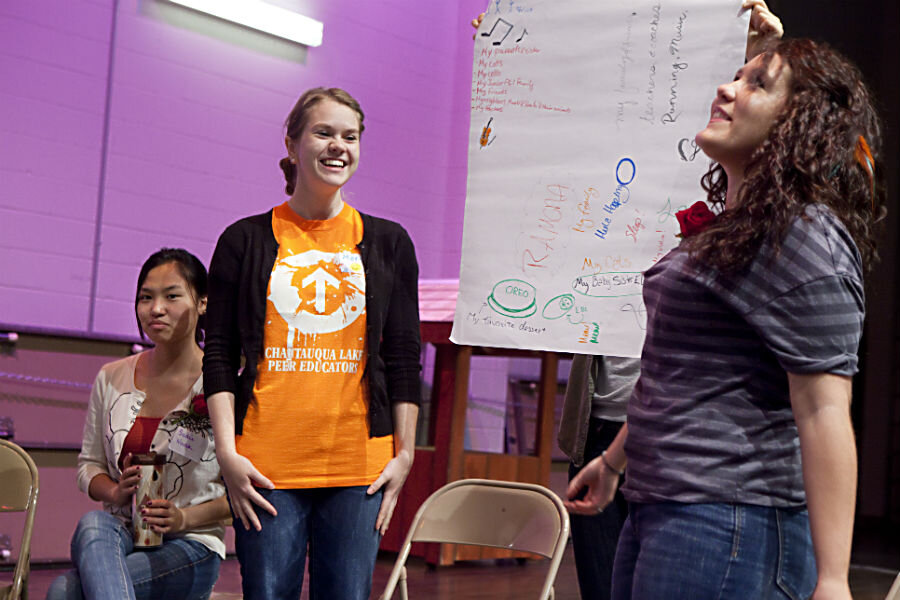Suicide prevention: Where is there progress?
Loading...
Showing support can help stop suicide.
That’s part of the message the International Association for Suicide Prevention (IASP) delivered Thursday for World Suicide Prevention Day: reach out to someone, offer your help, and maybe, in the process, save a life.
“The IASP would like to underline the importance of a proactive approach of services, communities, and individuals towards people at risk of suicide, and those who have lost somebody close through suicide as well,” IASP president Ella Arensman said in a statement.
The appeal to be more aggressive in fighting longstanding stigmas around suicide and encouraging those at risk to seek help embodies a crucial shift in discourse around suicide over the past two decades. But it also highlights the problems facing suicide prevention, as well as the limited progress both the international community and the United States has made in helping people at risk of taking their own lives.
“Twenty years ago, suicide was seen as a private matter – something to be discussed only between a patient and a mental health professional,” Dr. Jerry Reed, director of the Suicide Prevention Resource Center, wrote in April. Today, he noted, suicide discourse is meaningful and public.
A new poll, released early this month by the American Foundation for Suicide Prevention (AFSP), found that most US adults (93 percent) would do something if someone close to them was thinking about suicide. More than 80 percent said they disagreed with the idea that if someone wants to die by suicide, there is nothing anyone can do about it.
Two-thirds said they knew who they would tell if they were having thoughts of suicide. More than half would reach out to a friend, family member, or spouse if they were contemplating suicide, while just over two in five would reach out to a healthcare provider.
“This is real progress for how Americans view mental health – and suicide prevention,” AFSP CEO Robert Gebbia wrote for The Huffington Post. “What was once a taboo topic is increasingly understood as a pressing public health issue that we can address as a nation.”
The proliferation of prevention efforts, especially among young people, also represents "a quantum leap forward," Ann Haas, then senior director of education and prevention at the AFSP in New York, told The Christian Science Monitor in 2013.
The National Suicide Prevention Lifeline and the Veterans Crisis Line are among the leading efforts around the delivery of crisis services, Dr. Reed noted. Initiatives such as the Sources of Strength program in North Dakota and Samaritans in Boston work from within communities to change perceptions around and provide meaningful activities for young people suffering anxiety, mental illness, depression, and other suicide risk factors.
Facebook this year also teamed up with Forefront, Save.org, the University of Washington, and others to improve the suicide prevention and response tools on its site. Such efforts from leading social network and tech companies is crucial, because through the Internet, “kids can get exposed to the suicidal behavior of others half a world away," the AFSP’s Ms. Haas said.
Still, despite positive steps, suicide kills 800,000 people every year and remains the second leading cause of death for 15- to 29-year-olds worldwide, the World Health Organization reports. In the US, the suicide rate declined from 1986 to 2000 (from 13 deaths per 100,000 people to 10.4), before starting to slowly rise again. By 2013, the rate was back up to 12.6 per 100,000 Americans, according to the Centers for Disease Control and Prevention – indicating there is work to be done.
In 2013, the highest suicide rate (19.1 per 100,000) was among people age 45 to 64. The second highest rate (18.6) occurred in those 85 years and older. That may indicate that the overall rate is rising in the US because the baby boomer demographic is reaching a peak period of risk.
The key to consistent headway, experts say, will be in taking the most successful prevention methods and responses and making sure these are accessible to as many people as possible.
The SPRC and the Substance Abuse and Mental Health Services Administration both list a number of programs for suicide education, prevention, and treatment that have demonstrated positive outcomes. Among them are initiatives that focus on psychological intervention and skills development for the person at risk as well as care and support training for family members and caregivers. These lists could act as "a first step to promoting informed decisionmaking," and more broadly, serve as models for the types of initiatives policymakers should invest in.
“We are making progress in preventing suicide,” Reed wrote. To keep the momentum going, he continued, “we must invest in the success we’ve had, bringing it to scale ... and reaching far more of those who will benefit.”








